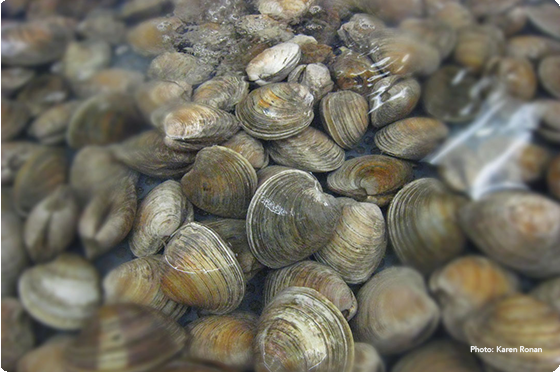
On January 13, 2021, the U.S. Army Corps of Engineers (Corps) published a Final Rule for modified and new Nationwide Permits (NWPs). Among the new NWPs were three relevant to mariculture operations: NWP 48 for shellfish, NWP 55 for seaweed, and NWP 56 for finfish. The new NWPs will become effective on March 15, 2021. The Corps set the effective date of the rule sixty days after being published in the Federal Register instead of the usual thirty days, perhaps to allow time for the Biden administration to review and approve it.
The Corps is authorized to issue permits under both Section 10 of the Rivers and Harbors Act (RHA) and Section 404 of the Clean Water Act (CWA). RHA Section 10 requires permits for “structures”—for mariculture operations, this might include cages, nets, racks, lines, pilings, ropes, trays, and tubes placed in navigable waters. CWA Section 404, on the other hand, requires permits for “dredge and fill” activities. In the mariculture context, the Corps has taken the position that distributing shellfish seed and installing shellfish gear does not qualify as a “fill” requiring a Section 404 permit, but spreading gravel or shell without shellfish seed inside in order to create a suitable surface to grow shellfish does qualify. Further, certain mariculture activities may constitute a “dredge”; for example, a Section 404 permit could be required for mechanical harvesting if it goes beyond incidental fallback by collecting sediment and depositing it in a different location.
The Corps authorizes projects under Section 404 and Section 10 through either individual or general permits. General permits authorize common activities that will have only minimal individual and cumulative environmental impacts, and a NWP is a type of general permit that authorize activities across the country. It is important to note that, despite its name, a NWP permit may not apply everywhere in the country. The Corps’ thirty-eight districts implement the regulatory program for each NWP, so the use of general permits is not uniform throughout the districts.
NWP 48 for Shellfish Mariculture
The Corps’s Final Rule issued on January 13 includes a modified NWP 48 for shellfish mariculture. One change that is immediately apparent is the Corps’ decision to change the name of the NWP from “shellfish aquaculture” to “shellfish mariculture.” The Corps altered the permit’s name because the NWP only authorizes growing shellfish in coastal waters. Since mariculture occurs in marine and estuarine open-water environments, while aquaculture can occur in a much broader area including on-land, the Corps decided that the term mariculture was more appropriate. Additionally, the previous version of NWP 48, which took effect in 2017, limited the area of impacted submerged aquatic vegetation in project areas that have not been used for commercial shellfish aquaculture activities in the past 100 years to a half acre. In the new modified NWP, the Corps has removed this limitation in favor of a pre-construction notification (PCN) requirement for new and existing commercial shellfish aquaculture activities that will directly impact greater than a half acre of submerged aquatic vegetation.
Finally, the Corps took steps to respond to litigation in the State of Washington challenging the 2017 NWP 48. In Coalition to Protect Puget Sound Habitat v. U.S. Army Corps of Engineers, an environmental group alleged that the 2017 NWP 48 violated the Clean Water Act (CWA), the National Environmental Policy Act (NEPA), and the Endangered Species Act (ESA). The U.S. District Court for the Western District of Washington held that the evidence did not support the agency’s conclusion that the permit would have a minimal environmental impact, ultimately declaring NWP 48 to be unlawful and setting it aside in the state of Washington. Two shellfish groups tried to stay this ruling, arguing that the federal district court judge ignored scientific evidence supporting the Corps’s determination that the permit would result in minimal environmental impacts, but the Ninth Circuit rejected their appeal.
In response the Corps made changes to the NWP 48 Decision Document relied on when issuing the 2021 NWP. The decision document now includes further discussions of impacts from shellfish aquaculture on submerged aquatic vegetation, benthic communities, birds, fish, and other species. The Corps has stated that the new decision document “provides a more rigorous analysis to support a finding, at a national level, that the NWP would authorize only those commercial shellfish mariculture activities that have no more than minimal individual and cumulative adverse environmental effects.”
To complicate matters, the Ninth Circuit recently heard oral arguments in the appeal of the aforementioned Washington lawsuit. The shellfish groups argued that the 2017 NWP 48 should be reinstated in the state of Washington because the District Court’s reasoning was flawed. Further, they argued that the 2021 NWP 48 did not moot their case. They based this argument on the fact that the 2021 NWP 48 does not go into effect until March 15, 2021, and the Biden administration could take action regarding the permits.
Looking forward, we will have to wait to see how both the Ninth Circuit and Biden administration decide to proceed. Further, while no lawsuits challenging the new NWPs have been filed, they could be likely based on the number of public comments received on the proposed rules.












